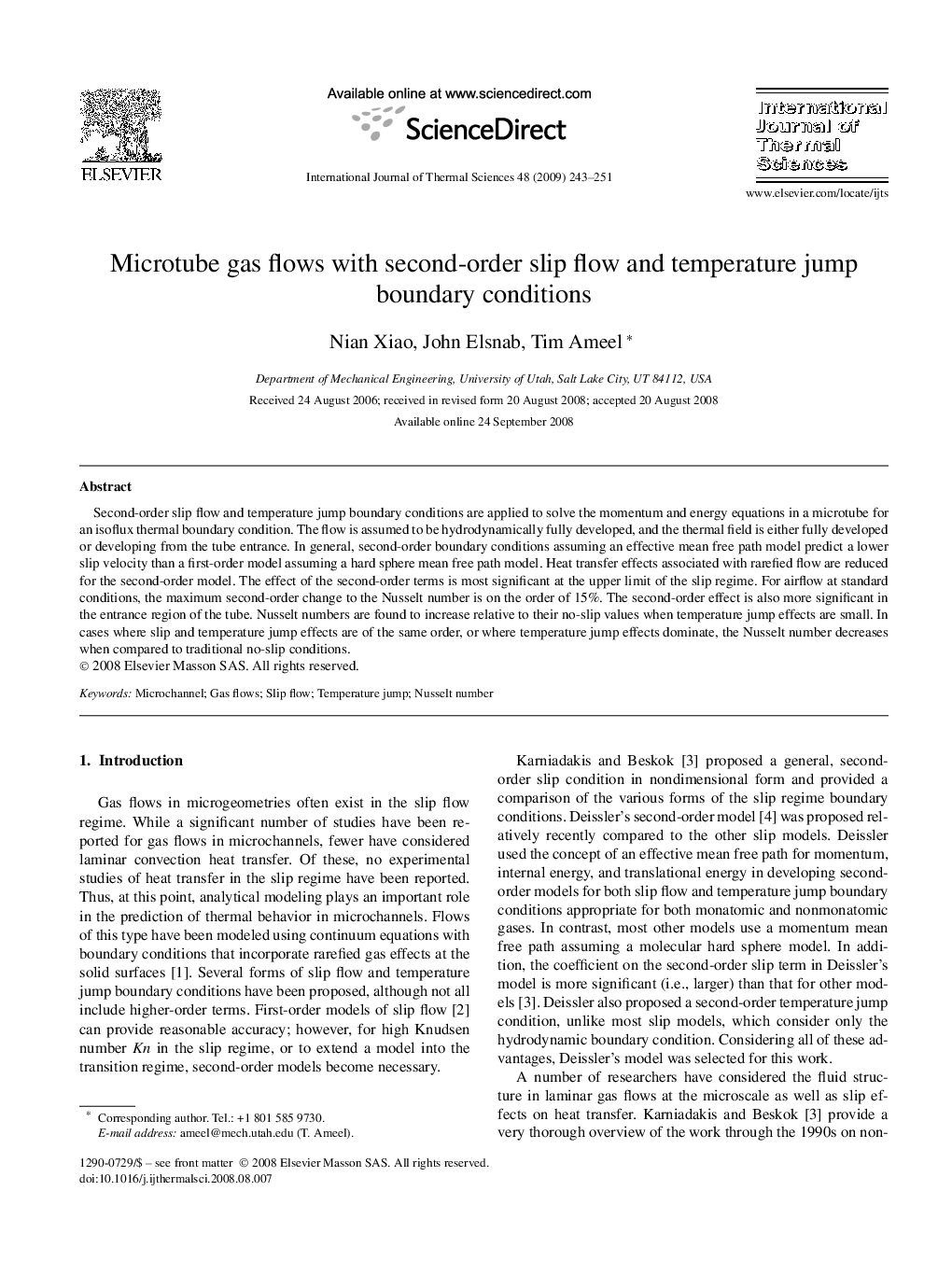| کد مقاله | کد نشریه | سال انتشار | مقاله انگلیسی | نسخه تمام متن |
|---|---|---|---|---|
| 669677 | 1458806 | 2009 | 9 صفحه PDF | دانلود رایگان |

Second-order slip flow and temperature jump boundary conditions are applied to solve the momentum and energy equations in a microtube for an isoflux thermal boundary condition. The flow is assumed to be hydrodynamically fully developed, and the thermal field is either fully developed or developing from the tube entrance. In general, second-order boundary conditions assuming an effective mean free path model predict a lower slip velocity than a first-order model assuming a hard sphere mean free path model. Heat transfer effects associated with rarefied flow are reduced for the second-order model. The effect of the second-order terms is most significant at the upper limit of the slip regime. For airflow at standard conditions, the maximum second-order change to the Nusselt number is on the order of 15%. The second-order effect is also more significant in the entrance region of the tube. Nusselt numbers are found to increase relative to their no-slip values when temperature jump effects are small. In cases where slip and temperature jump effects are of the same order, or where temperature jump effects dominate, the Nusselt number decreases when compared to traditional no-slip conditions.
Journal: International Journal of Thermal Sciences - Volume 48, Issue 2, February 2009, Pages 243-251